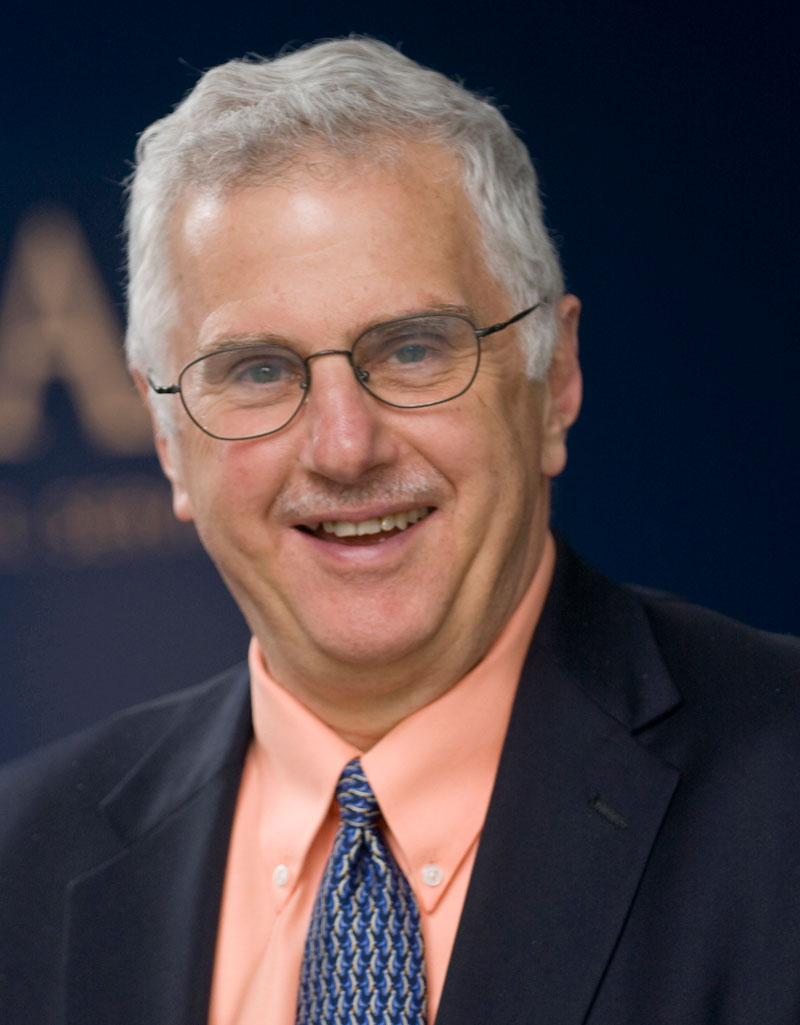|
|
Biography |
|
|
 Bruce Alberts, a prominent biochemist with a strong commitment to the improvement of science and mathematics education, serves as Editor-in-Chief of Science and as one of President Obama’s first three Science Envoys. Alberts is also Professor Emeritus in the Department of Biochemistry and Biophysics at the University of California, San Francisco, to which he returned after serving two six-year terms as the president of the National Academy of Sciences (NAS).
During his tenure at the NAS, Alberts was instrumental in developing the landmark National Science Education standards that have been implemented in school systems nationwide. The type of “science as inquiry” teaching we need, says Alberts, emphasizes “logical, hands-on problem solving, and it insists on having evidence for claims that can be confirmed by others. It requires work in cooperative groups, where those with different types of talents can discover them – developing self confidence and an ability to communicate effectively with others.”
Alberts is also noted as one of the original authors of The Molecular Biology of the Cell, a preeminent textbook in the field now in its fifth edition. For the period 2000 to 2009, he served as the co-chair of the InterAcademy Council, a new organization in Amsterdam governed by the presidents of 15 national academies of sciences and that was established to provide scientific advice to the world. Committed in his international work to the promotion of the “creativity, openness and tolerance that are inherent to science,” Alberts believes that “scientists all around the world must now band together to help create more rational, scientifically-based societies that find dogmatism intolerable.”
Alberts has earned many honors and awards, including 16 honorary degrees.
Bruce Alberts, a prominent biochemist with a strong commitment to the improvement of science and mathematics education, serves as Editor-in-Chief of Science and as one of President Obama’s first three Science Envoys. Alberts is also Professor Emeritus in the Department of Biochemistry and Biophysics at the University of California, San Francisco, to which he returned after serving two six-year terms as the president of the National Academy of Sciences (NAS).
During his tenure at the NAS, Alberts was instrumental in developing the landmark National Science Education standards that have been implemented in school systems nationwide. The type of “science as inquiry” teaching we need, says Alberts, emphasizes “logical, hands-on problem solving, and it insists on having evidence for claims that can be confirmed by others. It requires work in cooperative groups, where those with different types of talents can discover them – developing self confidence and an ability to communicate effectively with others.”
Alberts is also noted as one of the original authors of The Molecular Biology of the Cell, a preeminent textbook in the field now in its fifth edition. For the period 2000 to 2009, he served as the co-chair of the InterAcademy Council, a new organization in Amsterdam governed by the presidents of 15 national academies of sciences and that was established to provide scientific advice to the world. Committed in his international work to the promotion of the “creativity, openness and tolerance that are inherent to science,” Alberts believes that “scientists all around the world must now band together to help create more rational, scientifically-based societies that find dogmatism intolerable.”
Alberts has earned many honors and awards, including 16 honorary degrees.
|
|
|
|
|
|
|
Abstract |
|
|
|
|
|
|
|
|
We have always underestimated cells, and undoubtedly we still do today, because the chemistry that makes life possible is enormously sophisticated. Instead being dominated by randomly colliding individual protein molecules, as thought when I was a graduate student in the 1960s, we now know that nearly every major process in a cell is carried out by assemblies of 10 or more protein molecules, comprising a “protein machine”. Indeed, the entire cell can be viewed as a factory that contains an elaborate network of interlocking assembly lines, each of which is composed of a set of different protein machines in defined positions. There are many exciting challenges ahead for biologists. Living organisms are so complicated that we will need new methods of analysis to achieve any deep understanding of their molecular mechanisms. For example, even when we have determined each of the hundreds of different molecular interactions that create the actin cytoskeletal system, and know the three-dimensional structures and rate constants for the formation and disassembly of each of its possible sub-complexes, the challenge of computing the outcomes will remain. In the same sense, most of the interesting properties of cells and organisms are “emergent properties”, resulting from a large network of interactions that have non-intuitive outcomes. |
|
|
|
|